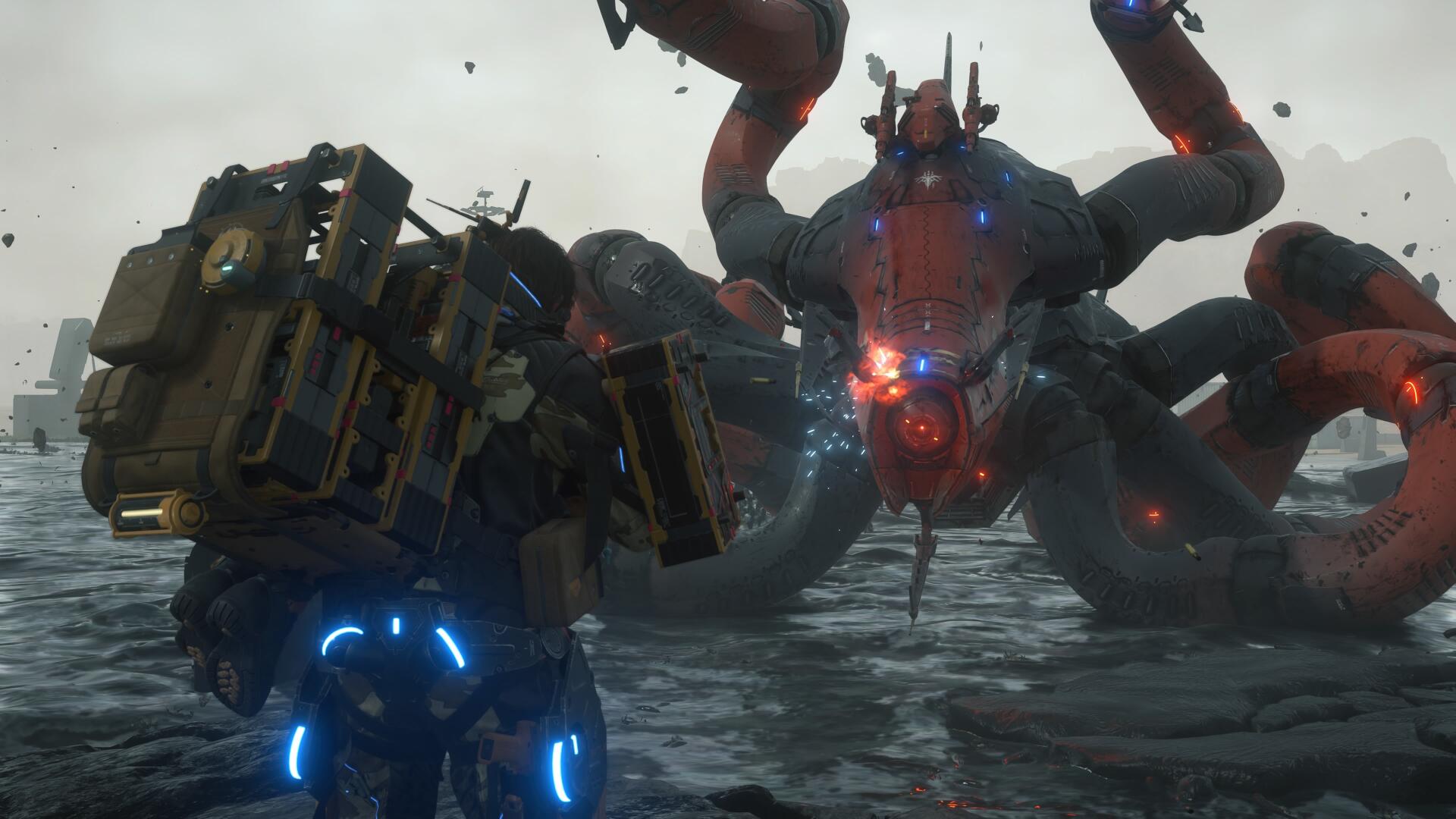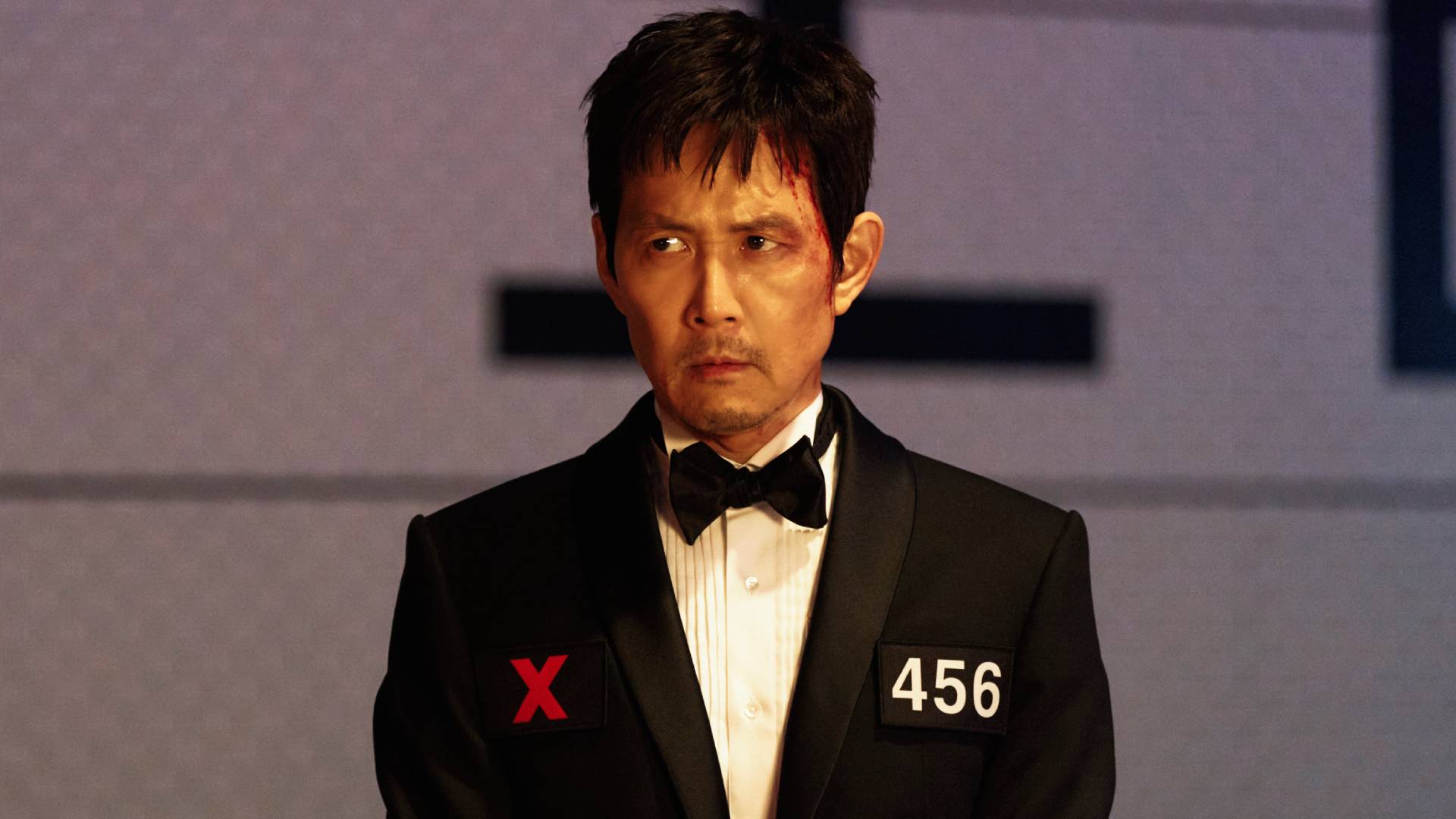Death Stranding makes you understand the value of connections and community projects
Beneath all the boxes, Death Stranding is about building a community and bringing players together
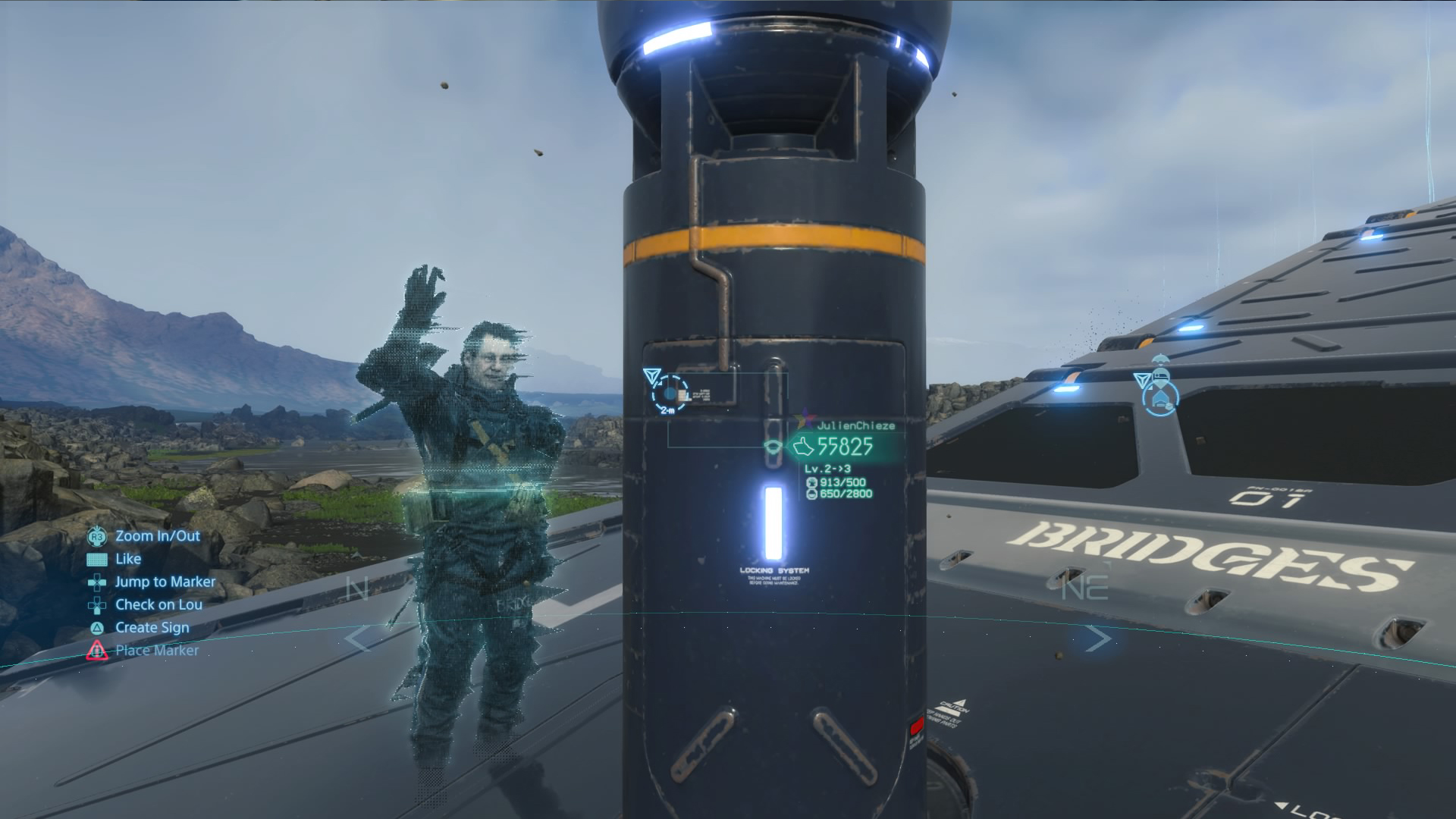
There's a moment in Death Stranding where I'm really, truly struggling to scale a snow-capped mountain in a blizzard. My exoskeleton legs have run out of juice; the boxes stacked on my back tower above my head and sway dangerously with every laboured step; my stamina is so low that Sam Porter Bridges regularly has to pause to catch his breath; and I'm all out of the critical Monster Energy Drink. It's around this time that I spy a Timefall Shelter and, right next to it, a generator – its lights glimmering like beacons through the white. They've been placed there by other users, other porters who have trodden this very route across this godforsaken mountain before me. They also just so happen to be the exact things that I need to save me – and my precious cargo – from absolute ruin.
Ever since Death Stranding was announced, creator Hideo Kojima has been pushing the idea that this is a game about connections, and regularly floats the idea that it's defining a new genre: the strand genre. Think what you want about the idea of Death Stranding defining a new genre – I certainly have a very complicated relationship with the game after countless hours of play – but it does, admittedly, do a good job of building connections between players, even though you'll never physically come into contact with another on your various journeys through the wilderness.
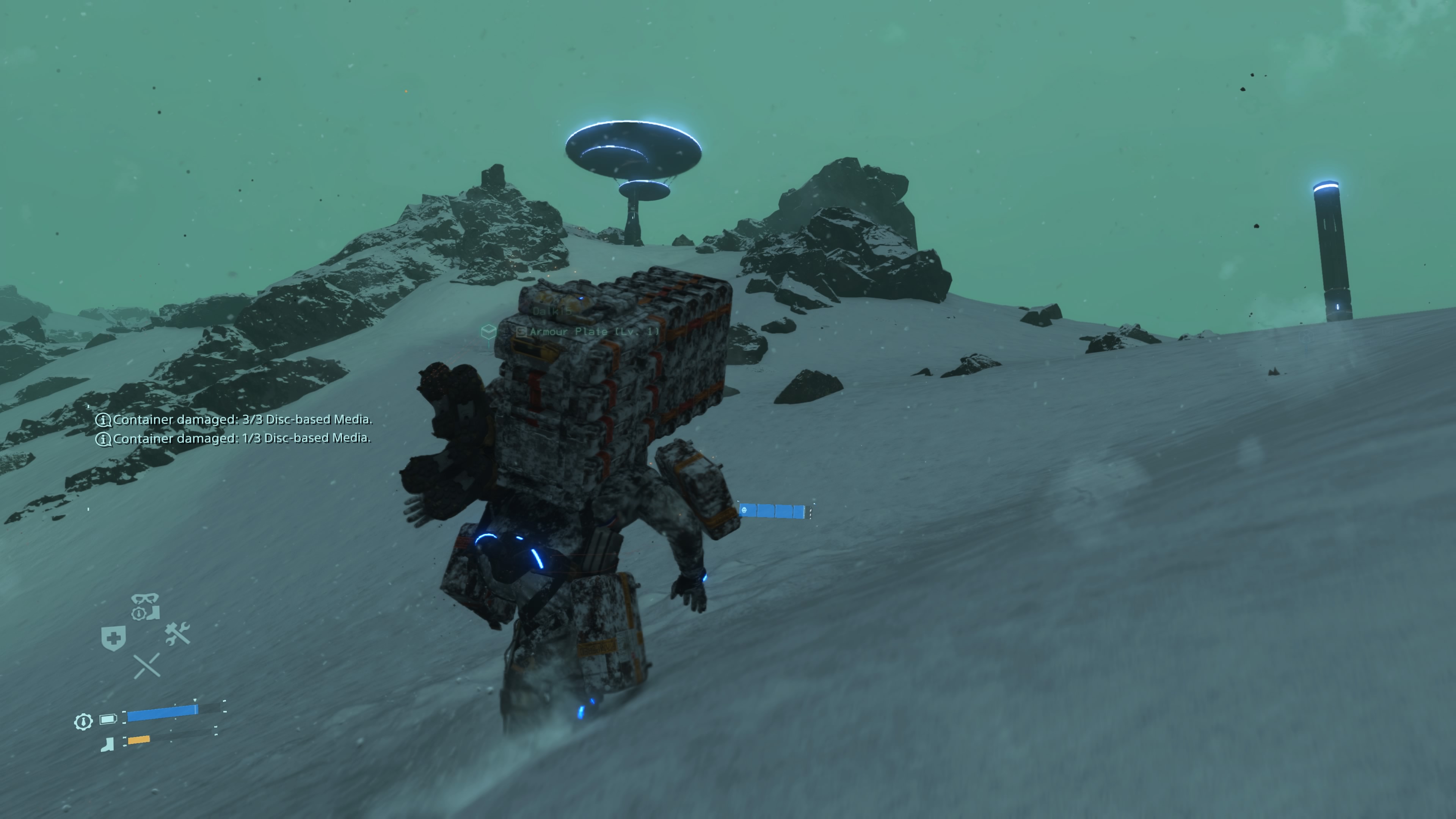
Asynchronous multiplayer isn't an entirely new idea, of course – the messages system in Dark Souls is a clear example of it being used successfully in the past. But it's Death Stranding's focus on aid, assistance and ultimately, positivity, which make it stand apart. In Dark Souls, you don't have to be helpful, but Death Stranding encourages you to assist and support wherever and whenever possible, to the point that the presence of other players shines through the bleakness of the game's environment as you move through it on your various, and numerous, journeys.
You can aid other players – and yourself, of course – in a number of ways. You'll gain a device called a PCC (Portable Chiral Constructor) early on in the game, a kind of fancy briefcase that lets you build a variety of different structures. To begin with, the things you can build are simple. You can construct a bridge to help cross rivers or rocky terrain, a watchtower to help you scan for enemy mules that might be looking to steal your cargo, and even a postbox that can be used to store goods in. As you progress through the game, you will have the opportunity to build structures that are even more useful. You'll be able to establish private shelters, ziplines to connect vast distances together, and even Timefall Shelters that will spring up like robotic trees to shield you from the ageing rain, repair your cargo, and give you a rare moment of respite.
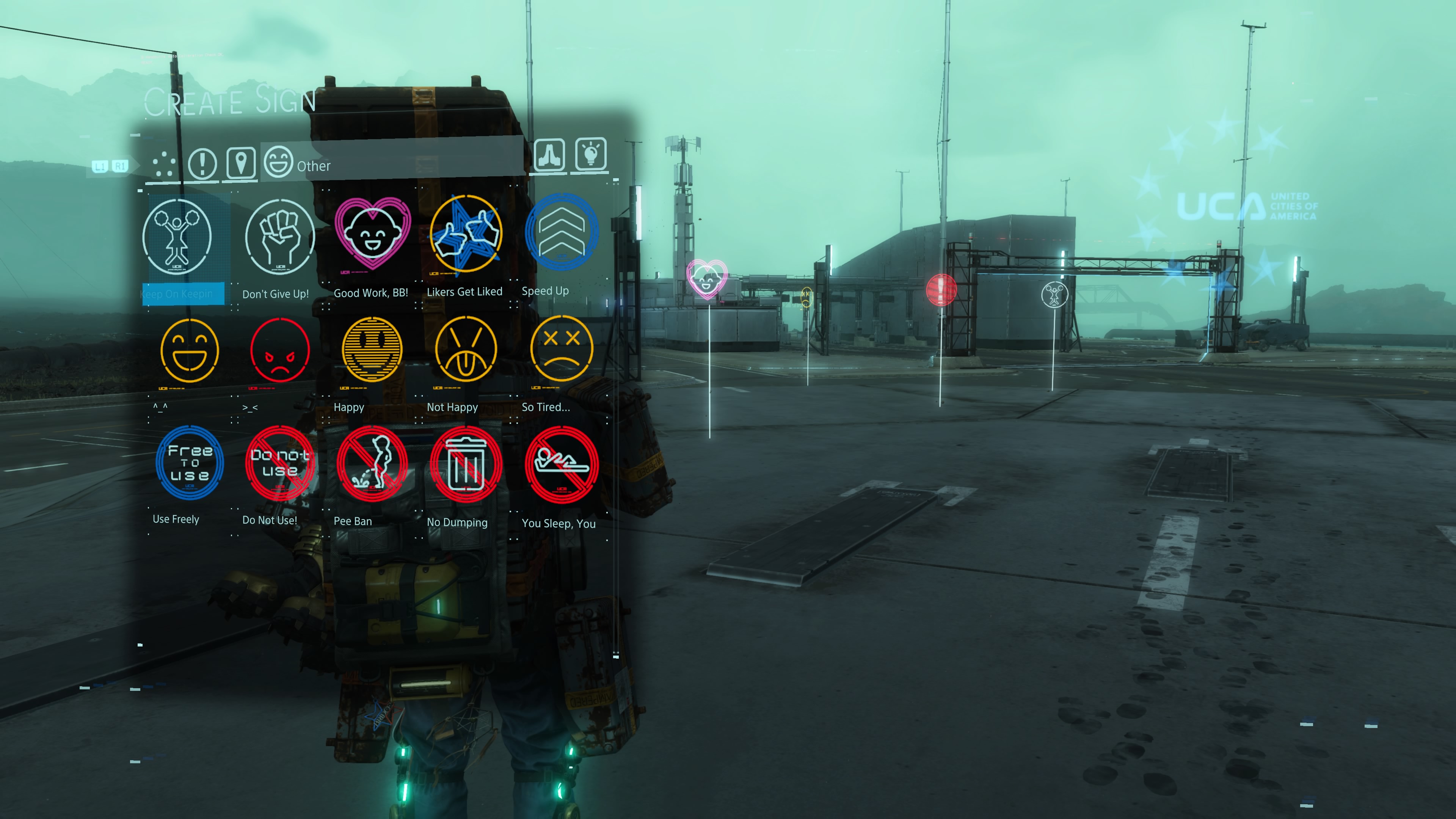
You'll also encounter markers that can be left behind by other players across Death Stranding's world, these little glowing signs that pop up to warn of difficult to traverse terrain or the looming presence of BTs. You might find a note suggesting that you pop a ladder up here or a generator there; a message might simply be a bright yellow smiling face that will signify that you aren't in this alone and that someone else has successfully walked this same path before you. I'm particularly fond of the markers that will give you a little boost, like the "Good Work, BB!" sign that calms your most precious cargo, or the "Keep On Keeping On" marker that boosts your stamina like a hug from afar.
These signs do more than just bridge the gaps between players that will never meet. They also manage to build a community out of the rubble of Death Stranding's world. Structures built through PCCs can be upgraded, with multiple porters contributing materials and resources to their evolution. Ultimately, this ensures that structures are more resilient and more effective to each and every player that may stumble upon them in a time of need. There are also roads to build too, though the sheer amount of materials required means it's a lot of work for one person to complete alone – it indirectly encourages players to come together as a community, to work together towards the shared goal of building connections.
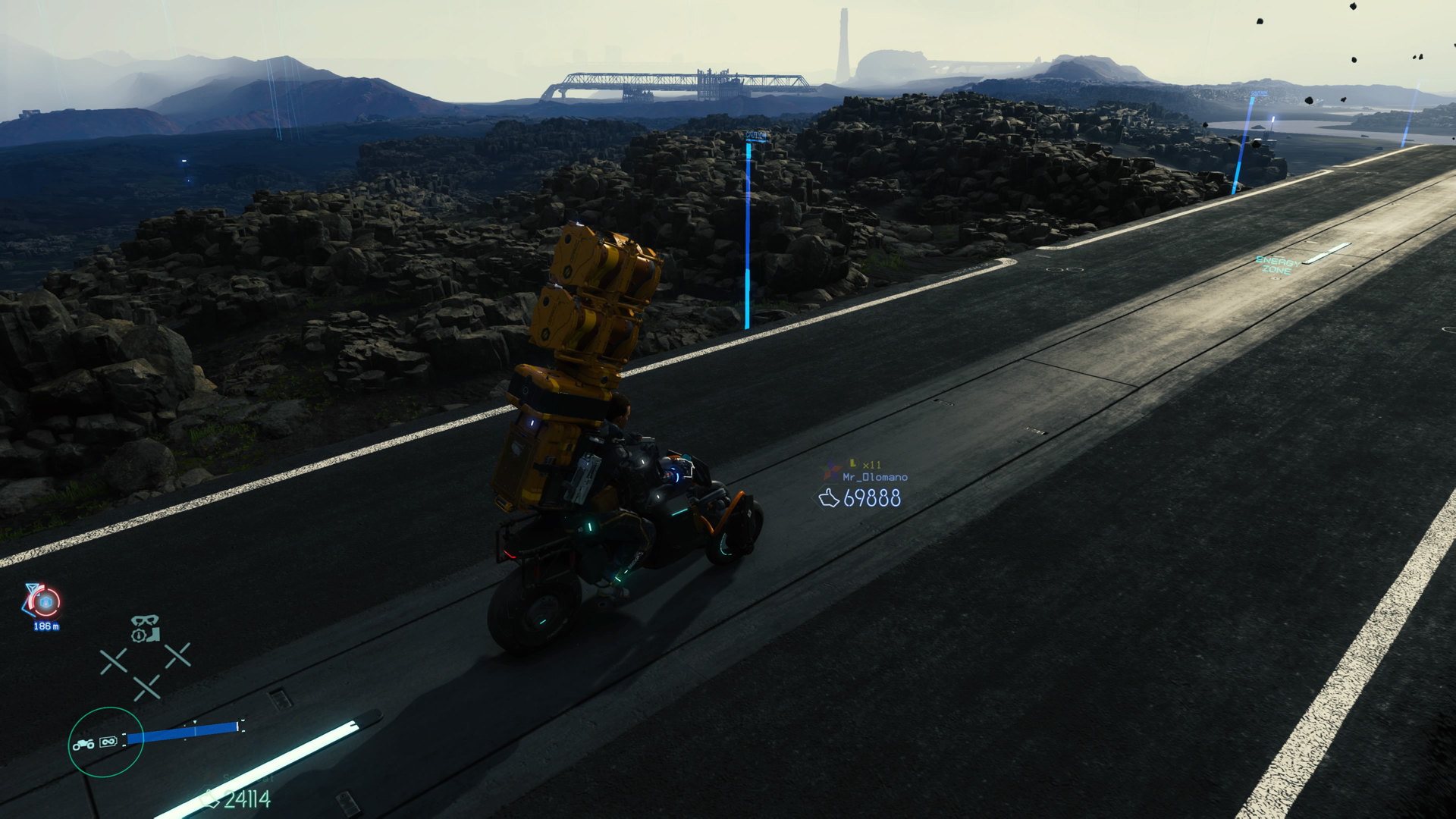
As you play, you'll be notified whenever someone uses a structure that you've left behind, or contributes to its ongoing maintenance – the 'likes' piling up like some sort of post-apocalyptic Facebook. I'm still not entirely sure that they serve as anything more than an ego boost, and a constant reminder that you're helping out the other porters out there, but as an in-game currency it's certainly heartwarming.
Weekly digests, tales from the communities you love, and more
And that sense of warmth spreads out as you begin to realise that all of these structures are starting to connect with one another. You'll suddenly find that a generator in a remote area will be joined by a Timefall Shelter. As you return to the areas over time, you'll find that shelter is connected to another, and later still a zipline will appear, connecting you to another gaggle of structures all aiming to make your Death Stranding journey a little easier. These hubs serve as a reminder of those who have come before, serving those who will come, and those who are still making their journeys across the wilderness; hubs borne of a struggling, remote community still somehow managing to make connections.
And if you ever forget that, just remember to every now and then hit the touchpad. Sam Porter Bridges will call out into the void, and sometimes, someone, somewhere will call back.

Sam Loveridge is the Brand Director and former Global Editor-in-Chief of GamesRadar. She joined the team in August 2017. Sam came to GamesRadar after working at TrustedReviews, Digital Spy, and Fandom, following the completion of an MA in Journalism. In her time, she's also had appearances on The Guardian, BBC, and more. Her experience has seen her cover console and PC games, along with gaming hardware, for a decade, and for GamesRadar, she's in charge of the site's overall direction, managing the team, and making sure it's the best it can be. Her gaming passions lie with weird simulation games, big open-world RPGs, and beautifully crafted indies. She plays across all platforms, and specializes in titles like Pokemon, Assassin's Creed, The Sims, and more. Basically, she loves all games that aren't sports or fighting titles! In her spare time, Sam likes to live like Stardew Valley by cooking and baking, growing vegetables, and enjoying life in the countryside.
